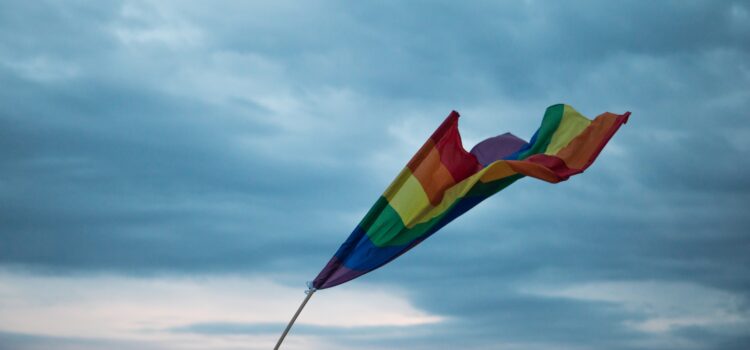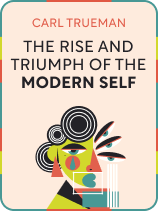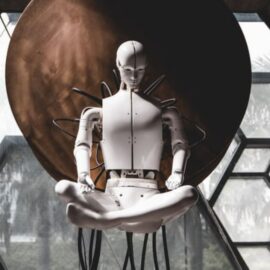

This article is an excerpt from the Shortform book guide to "The Rise and Triumph of the Modern Self" by Carl Trueman. Shortform has the world's best summaries and analyses of books you should be reading.
Like this article? Sign up for a free trial here.
When and how did the LGBTQ+ movement start? Does it spell the end of Christian culture in the West?
In The Rise and Triumph of the Modern Self, Carl Trueman analyzes how our sense of the self has undergone a revolution in the last few centuries. He discusses how the modern self shaped the LGBTQ+ movement, transgender identity, and modern understandings of marriage.
Keep reading to understand Trueman’s analysis of the LGBTQ+ movement and how it came to be.
The Rise of the LGBTQ+ Movement
Trueman contends that the rise of the LGBTQ+ movement—a political alliance organized around the interests of gay, lesbian, and transgender people—depends on an understanding of the self that is individually determined, at odds with traditional culture, and highly sexual. Furthermore, Trueman explains that this movement’s aims are opposed to traditional Christian values and destructive to the continuation of Christian culture.
1) The Modern Self Shaped the LGBTQ+ Movement
The modern self played an essential role in forging a political alliance of gays, lesbians, and transgender people. Trueman asserts that these groups aren’t necessarily natural allies. For example, during the 1970s, many lesbian feminists argued that their sexuality was deeply rooted in an embodied experience of femininity, and not simply the female equivalent of male homosexuality.
Furthermore, the identities of gays and lesbians are based on an understanding of gender that contradicts the claims of transgender identity. The defining feature of homosexual identity is an attraction to the same gender. For this to exist, gender needs to be a relatively stable category. Trueman asserts that transgender identity requires the rejection of gender as a stable category. The individual is free to declare themselves a different gender because these categories have no stable or continuous essence.
However, a shared modern understanding of the self brought gays, lesbians, and transgender people together into an alliance. Recall that a modern self places authenticity in tension with society and places sexuality at the core of authenticity. Because each of these groups saw their authentic sexual identities as being in tension with society, this created a shared sense of victimhood that bonded the alliance.
| Tension and Coalition Building in the Early LGBTQ+ Movements Historians confirm Trueman’s analysis that there were tensions across gender lines in the early years of the LGBTQ+ movement. However, some argue for a more complex picture of the alliance’s formation than simply a shared conception of personal victimhood. Many of the early gay rights organizations in the US were formed by white, middle-class gay men, and the goals and rhetoric of these organizations reflected the interests of these specific groups. Because recruitment efforts depended heavily on social networks, membership in these organizations would remain lopsided in favor of men, and women in these spaces sometimes faced misogynistic views and behaviors. Furthermore, many lesbian activists identified more strongly with feminist and women’s liberation movements in the 1970s. That said, several cultural tendencies brought these groups together. Before the HIV/AIDS crisis of the 1980s, many feminist movements were already skeptical of the healthcare industry’s ability to recognize and fulfill their health needs. Therefore, they easily found a common cause with the HIV/AIDS treatment activism that took root in the gay movements of the 1980s. |
2) The Modern Self Shaped Transgender Identity
Trueman asserts that transgender identities are the product of modern selfhood. To claim that someone’s real gender is the opposite of their biological sex, the internal, feeling self must take priority over external conditions.
Furthermore, a sense of oppression from persecution fundamentally shapes trans identity. Recall that the modern self places authenticity in opposition to culture. Therefore, those who advocate traditional gender identities can be cast as antagonists to authentic selfhood. And because Freudian Marxists defined oppression as psychological, those who reject transgender identities are now widely seen as “oppressors.” Thus, the widespread acceptance of transgender identities in the context of modern selfhood directly leads to the moral stigmatization of traditional Christians.
(Shortform note: While Trueman asserts that transgender identity is an assertion of individual preferences over biology, this picture is complicated by debates over the origins of transgender identity. Scientific research has gathered some evidence that genetics may play a role in being transgender. This has led some researchers to argue that transgender identity has a biological basis. However, these claims are controversial, especially among advocates for transgender acceptance. Some argue that claiming a biological basis for transgender identity would give medical institutions the gatekeeping power to determine who is “really” transgender, and could exclude those who identify as nonbinary.)
3) The Modern Self Redefined Marriage
Lastly, Trueman maintains that a redefinition of marriage is an inevitable outcome of the modern conception of selfhood. He makes this case by contrasting traditional Christian marriage with the modern view of marriage.
Traditional Christian marriage fulfills the sacred purpose of creating children and a stable home for them. The modern conception of marriage makes marriage about the emotional fulfillment of the partners getting married. Trueman pushes back on defenders who claim that this is merely an expansion of traditional marriage. Instead, Trueman considers this a destruction of traditional marriage, because this detaches marriage from the sacred moral framework and places it in the framework of the modern, feeling self.
(Shortform note: Though the traditional moral framework of Christian marriage is becoming less popular, it does still divide LGBTQ+ activists on whether they want to participate in the institution of marriage at all. Some argue that marriage has historically oppressed women, both through cultural expectations that they obey their husbands and through legal doctrines that forbid married women from owning their own property. Thus, they reject marriage entirely as a corrupt institution. On the other hand, other LGBTQ+ activists hold that by abstaining from the cultural and legal protections of marriage, same-sex couples become relegated to the status of second-class citizens compared to heterosexual couples.)

———End of Preview———
Like what you just read? Read the rest of the world's best book summary and analysis of Carl Trueman's "The Rise and Triumph of the Modern Self" at Shortform.
Here's what you'll find in our full The Rise and Triumph of the Modern Self summary:
- How the modern conception of selfhood has changed over the centuries
- How Christian views have become stigmatized, damaging Western culture
- What modern Christians can do to preserve traditional values






